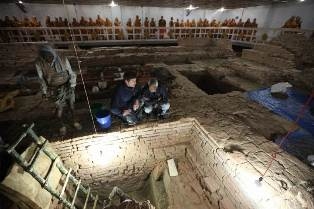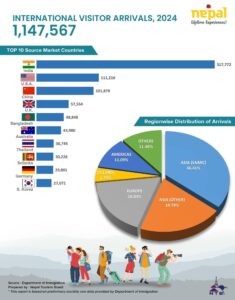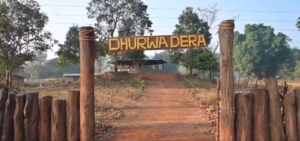Archaeological discoveries in Nepal confirm early date of Buddha’s life

Kathmandu : Archaeologists working in Nepal have uncovered evidence of a structure at the birthplace of the Buddha dating back to the sixth century B.C. This is the first archaeological material linking the life of the Buddha — and thus the first flowering of Buddhism — to a specific century.
Pioneering excavations within the Sacred Garden of Lumbini, Nepal, a UNESCO World Heritage site long identified as the birthplace of the Buddha, uncovered the remains of a previously unknown timber structure under a series of brick temples. Laid out on the same design as those above it, the timber structure contains an open space in the center that links to the nativity story of the Buddha himself.
“Very little is known about the life of the Buddha, except through textual sources and oral tradition,” said archaeologist Professor Robin Coningham of Durham University, U.K., who co-led the investigation. Coningham said. “Now, for the first time, we have an archaeological sequence at Lumbini that shows a building there as early as the sixth century B.C.”
Buddhist tradition records that Queen Maya Devi, the mother of the Buddha, gave birth to him while holding on to the branch of a tree within the Lumbini Garden, midway between the kingdoms of her husband and parents. Coningham and his colleagues postulate that the open space in the center of the most ancient, timber shrine may have accommodated a tree. Brick temples built later above the timber one also were arranged around the central space, which was unroofed.
To determine the dates of the timber shrine and a previously unknown early brick structure above it, fragments of charcoal and grains of sand were tested using a combination of radiocarbon and optically stimulated luminescence techniques. Geoarchaeological research has confirmed the presence of ancient tree roots within the temple’s central void.
The international team, led by Coningham and Kosh Prasad Acharya one of Nepal’s top archaeologists, say the discovery contributes to a greater understanding of the early development of Buddhism as well as the spiritual importance of Lumbini. Their peer-reviewed findings are reported in the December 2013 issue of the international journal Antiquity. http://journal.antiquity.ac.uk/
The archaeological investigation was funded by the Government of Japan in partnership with the Government of Nepal under a UNESCO project aimed at strengthening the conservation and management of Lumbini. The research was also supported by Durham and Stirling Universities in the UK and the National Geographic Society’s Global Exploration Fund. Coningham and Acharya were joined on the Antiquity paper by coauthors K.M. Strickland, C.E. Davis, M.J. Manuel, I. A. Simpson, K. Gilliland, J. Tremblay, T.C. Kinnaird and D.C.W. Sanderson.
“UNESCO is very proud to be associated with this important discovery at one of the most holy places for one of the world’s oldest religions,” said UNESCO Director-General Irina Bokova, who urged “more archaeological research, intensified conservation work and strengthened site management” to ensure Lumbini’s protection.
“These discoveries are very important to better understand the birthplace of Buddha,” said Ram Kumar Shrestha, Nepal’s Minister of Culture, Tourism and civil Aviation. “The Government of Nepal will spare no effort to preserve this significant site.”
Lumbini is one of the key sites associated with the life of the Buddha; others are Bodh Gaya, where he became a Buddha or enlightened one; Sarnath, where he first preached; and Kusinagara, where he passed away. At his passing at the age of 80, the Buddha is recorded as having recommended that all Buddhists visit “Lumbini.” The shrine was still popular in the middle of the first millennium A.D. and was recorded by Chinese pilgrims as having a shrine beside a tree.
The temple at Lumbini remains a living shrine; the archaeologists worked alongside meditating monks, nuns and pilgrims.
Writing in Antiquity, the authors state: “The sequence (of archaeological remains) at Lumbini is a microcosm for the development of Buddhism from a localized cult to a global religion.”
Lost and overgrown in the jungles of Nepal in the Medieval period, ancient Lumbini was rediscovered in 1896 and identified as the birthplace of the Buddha on account of the presence of a third-century B.C. sandstone pillar. The pillar bears an inscription documenting a visit by Emperor Asoka to the site of the Buddha’s birth as well as the site’s name — Lumbini.
Despite the rediscovery of the key Buddhist sites, their earliest levels were buried deep or destroyed by later construction, leaving evidence of the very earliest stages of Buddhism inaccessible to archaeological investigation, until now.
Half a billion people around the world are Buddhists, and by 2020, some 22 million Buddhist pilgrims are expected in South Asia; many hundreds of thousands make a pilgrimage to Lumbini each year. Source : UNESCO
November 25 , 2013














